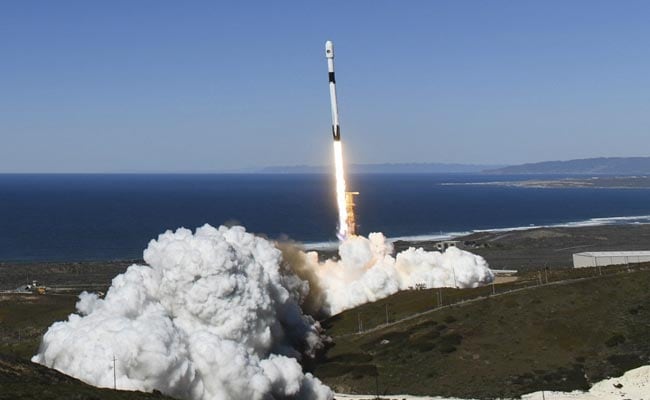
The Falcon 9 rocket was launched on July 19. (AFP file photo)
A rocket launched by Elon Musk’s SpaceX punched a temporary hole in the ionosphere surrounding our planet, according to a report in spaceweather.com. The Falcon 9 rocket was launched on July 19 from the Vandenberg Space Force Base in California. According to the company website, it is a reusable, two-stage rocket for the reliable and safe transport of people and payloads into Earth orbit and beyond. SpaceX also said that it is the world’s first orbital class reusable rocket. Falcon 9 has conducted 240 launches and 198 landings.
Photos from the July 19 launch showed a faint red glow, which was studied by space physicist Jeff Baumgardner from Boston University. After reviewed the footage of the launch, he said that the red glow indicates that a hole was made in the ionosphere.
“This is a well-studied phenomenon when rockets are burning their engines 200 to 300 km above Earth’s surface,” Mr Baumgardner told spaceweather.com.
“I reviewed footage from the July 19th launch. It shows the second stage engine burning at 286 km near the F-region peak for that time of day. So, it is quite possible that an ionospheric ‘hole’ was made,” he added.
The ionosphere lies on the edge of space and is filled with charged particles called ions. According to NASA, it is the reason that geomagnetic storms cause aurora, with solar plasma reacting with the ions to create the spectacular colours seen in the sky.
A similar event involving the same rocket happened earlier too. According to Science Times, Falcon 9 was launched from Vanderberg Space Force Base carrying FORMOSAT-5 payload on August 24, 2017.
Due to the low weight, the rocket launched along a vertical path rather than travelling parallel to the surface of the Earth, creating shockwaves. As a result, it ruptured a hole in the plasma of the ionosphere.
The same thing happened again when the Falcon 9 rocket was launched on June 19, 2022, the outlet further said.
Featured Video Of The Day
Uorfi Javed’s Argument Over Her Airport Look